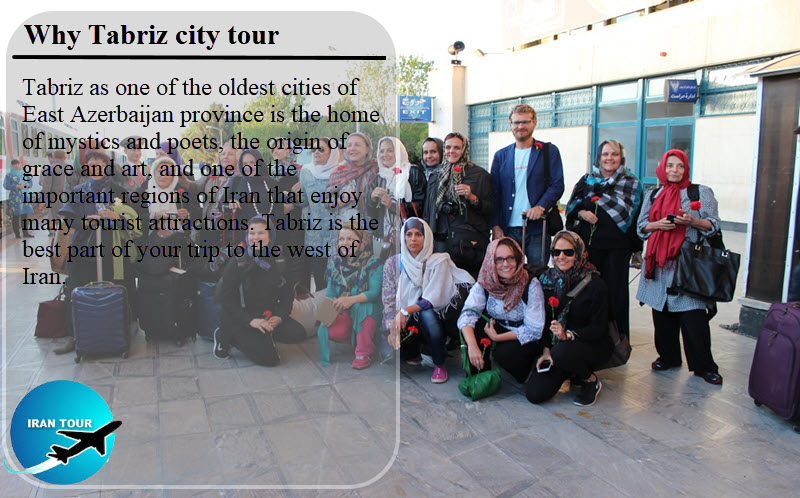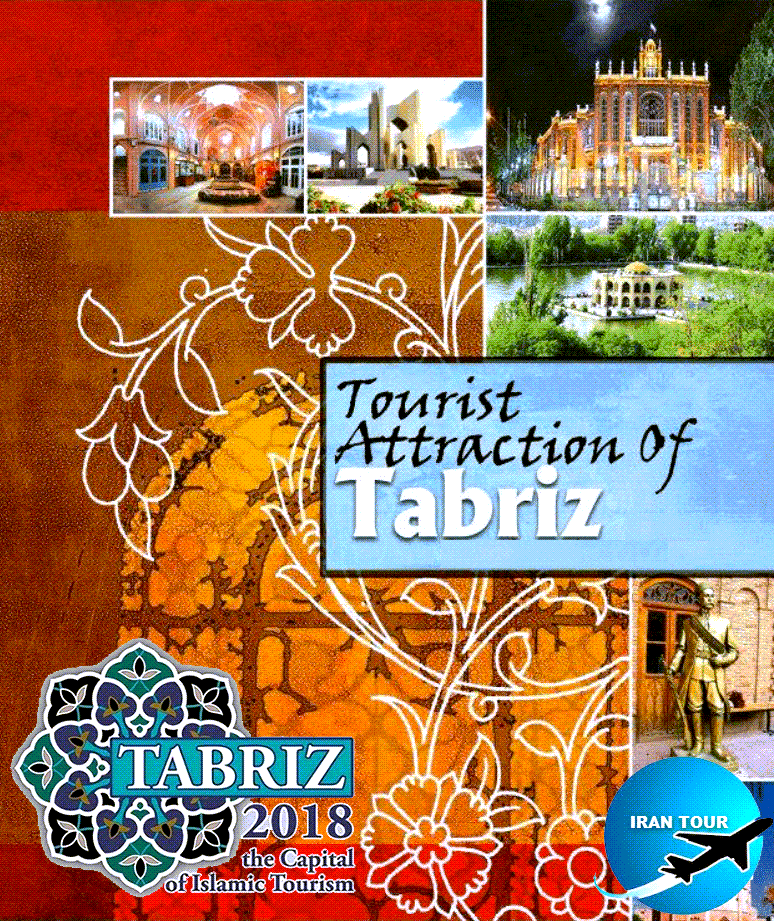Copyright 2020 - 2021 irantour.tours all right reserved
Designed by Behsazanhost
Why Tabriz city tour
Why Tabriz city tour
Tabriz is Soaked in history and dotted with splendid vibrant historical sites and is one of the top tourist destinations in Iran, drawing hundreds of thousands of foreign and domestic travelers each year. Visitors have at their disposal tours to a rich, matchless patchwork of Iranian history and architecture such as Azarbaijan Museum, Arg-e Tabriz, Poets’ Mausoleum, Elgoli Park, Shahriyar House Museum, Municipal Hall, St Mary’s Church, Qajar Museum, Constitution House, Khaqani Park, and Sarkis Church just to name a few. The northwestern city is also famous for having a rich Azeri culture.
12 Amazing Reasons to travel to Tabriz :
-The safest city in Iran.
-One of the ancient cities in the west of Iran, which has been built on the Parthian city's bases
-Tabriz is known as an open-space museum city and has 17 museums in Tabriz as the Azerbaijan museum.
-Kandovan rocky village is the second most rocky village in the world.
-The Bazaar of Tabriz is one of the largest roofed bazaars in Iran and also the world which is recorded as a UNESCO World Heritage.
-The most famous and historical Christian Churches are located in -East Azerbaijan and close to Tabriz)Monastery of Saint Stepanos & Saint Thaddeus Cathedral)
-Other famous Christian churches are Choopanan church, Zor Zor church, Church of the Holy Mother of God, and 7 famous churches in Tabriz city.
-Babak Castle is a symbol of the Iranian struggle against Arab occupation.
-Aynalo jungles, Chestnut trees, and the red deer as the best-protected areas in Azerbaijan province.
-The beautiful Sahand peak with a height of 3965 m.
-Aladaghlar mountains(colorful mountains), one of the wonders of nature.
Why Tabriz is a must-see destination |
 |
How you fall in love with Tabriz city
The hospitable people, ubiquitous carpet shops, abundant public places, an efficient transport system, masterpiece historical monuments, original traditional customs, and unique cultural and folklore events are the most important Tabriz's tourist attractions. Tabriz has long been a place of cultural exchange since antiquity. Its UNESCO-registered bazaar complex gives reference to the city’s glorious past when it was a peak commercial center on the Silk Road. The sprawling city was named the capital of Islamic tourism in 2018 by the vote of the intergovernmental Organization of Islamic Cooperation in 2015.
Most Famous Monuments
The Kandovan village, the Blue Mosque, and the Tabriz historical bazaar complex as three specimen of the best tourist attractions in East Azarbaijan province that can surprise all visitors.
The historic Kandovan, situated on the outskirts of Osku, epitomizes a modern troglodyte dwelling with homes being carved out on eroded rocks in the shape of stony ice-cream cones. Kandovan is highly reminiscent of Cappadocia, a historical counterpart in Central Anatolia, Turkey.
Masjed-e Kaboud (literary ‘the Blue Mosque’) has long been distinguished for the grandeur of its intricate blue tilework and calligraphy for which it is nicknamed. The ornament took artists about a quarter century to cover every surface. Completed in 1465 it is remarkable for its simplicity, brickwork, and great size as well. The mosque survived a devastating earthquake in 1727. However, many parts of it caved in due to a quake that struck later in the same century. Many parts of the structure were rebuilt in 1973.
 |
A labyrinth of interconnected covered passages that stretches for about 5 km, the Tabriz historic bazaar complex has been a melting pot of cultural exchange since antiquity. The bazaar embraces countless shops, over 20 caravanserais and inns, some 20 vast domed halls, bathhouses, and mosques, as well as other brick structures and enclosed spaces for different functions. Its history dates back over a millennium, however, the majority of fine brick vaults that capture most visitors’ eyes date from the 15th century.
The city of Tabriz has long been at the center of notice, for centuries it acted as a buffer between regional powers, the Persian and Ottoman empires in particular. It became the capital of the Mongol Il-Khan Mahmud Gazan (1295–1304) and his successor. Timur (Tamerlane), a Turkic conqueror, took it in 1392. Some decades later the Kara Koyunlu Turkmen made it their capital, it was when the famous Blue Mosque was built in Tabriz.
Tabriz retained its administrative status under the Safavid dynasty until 1548 when Shah Tahmasp I relocated his capital to Qazvin. During the next two centuries, Tabriz changed hands several times between Persia and Ottoman Empire. During World War I, the city was temporarily occupied by Turkish and then Soviet troops. The pace of modernization quickened in Tabriz when World War II came to an end, its manifestation can be traced by the emergence of widened streets, high-rise buildings, and public gardens adorned with fountains and pools.
All in all, Tabriz is widely deemed as a summer resort by domestic passengers due to its cold winters and temperate summers. Located in the mountainous East Azarbaijan province, Tabriz is sandwiched between the looming Sahand and Bozqoosh peaks, meanwhile, it is being cut through by some rivers such as Aji Chay (also called Talkhe-Rud).
Visiting Tabriz not only is a journey to Iran's history but also is visiting the most beautiful historical monuments and unique culture with amazing events.
- Details
- Category: Tabriz Tourism